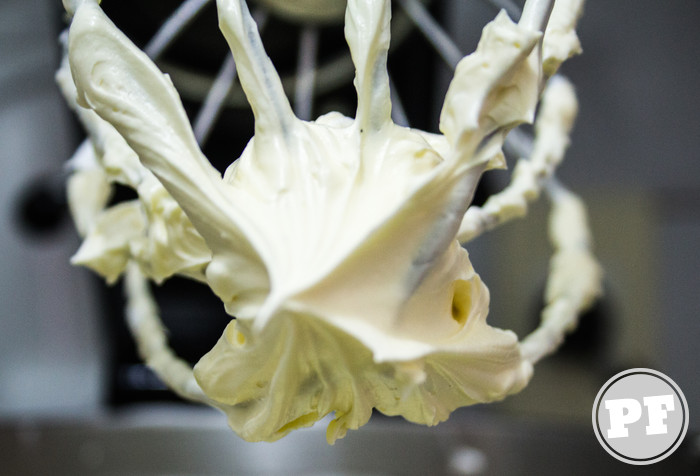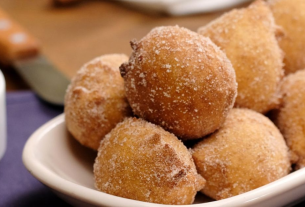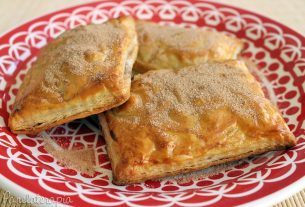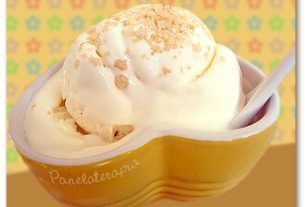Anyone who has a soft spot for American (and English) confectionery has already come across the classic buttercream: butter cream whipped with sugar and usually flavored with vanilla.
It is without a doubt one of the easiest confectionery bases to make, but it is a seal 100% Fat. After all, I’m eating sweet butter, basically. This still causes me great distress existential.
And foreigners love it! Not to mention when it is made with vegetable fat… more afflictions yet. If you have the same existential questions this version of Swiss Meringue Buttercream can help.
Thus, it continues to have a quantity questionable of butter. But it goes less, beyond sugar. The sweetness is just right. O swiss meringue it gives that lightness, it’s a very fluffy and super versatile cream to be flavored with whatever you want.
The two Whites are tests of a tip from foreigners: add violet dye to the buttercream to make it white(!). Yeah, I was pretty skeptical too. Mine turns quite yellow because of the butter, which is normal. So, I thought it would turn green, but…
It works, until it works. You have to add a lot, but very little and stir a lot. White, white didn’t stay, but the yellow tone diminishes a lot. I tested with violet dye (which looked better) and denim blue. And the others are ideas of some possible flavors!
The recipe has several tips and tips so you don’t make mistakes, read them all!
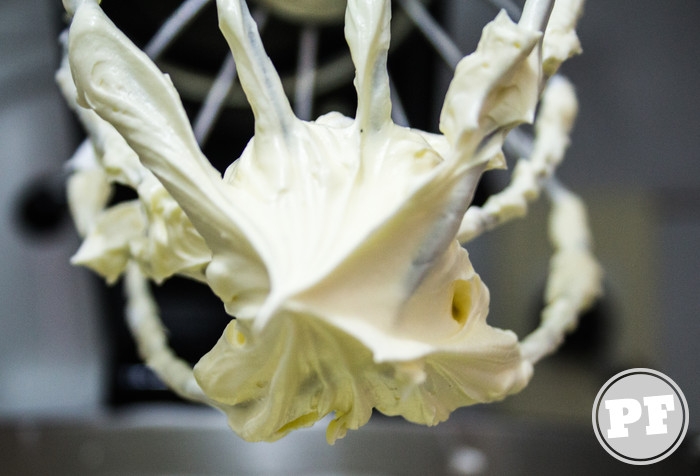
Buttercream with Swiss Meringue
Makes: 400 g
- 90 g clara (about 03 units, I recommend weighing)
- 150 g refined sugar
- 200 g butter without salt (in semi-chilled cubes)
- 5 mL vanilla extract (OR 1-2mL essence)
FLAVOR VARIATIONS
- 200 g semi-sweet chocolate for every 400g traditional buttercream (melted)
- 75 g creamy/pasty dulce de leche for every 200g traditional buttercream
1 cup: 250mL | 1 tablespoon: 15mL.
- In a very clean pan, mix egg whites and sugar.
- Place over low heat and stir to dissolve the sugar. This step is traditionally done in a water bath. It can also be done if you are afraid.
- Test with your fingers to feel if the sugar has dissolved. The consistency of the egg whites changes, they also become more liquid. It takes about 2-3 minutes.
- Transfer to the bowl of a mixer, beat with a wire whisk at high speed for about 10-15 minutes until the mixture cools. Seriously, really.
- When it is colder to the touch, slowly add the butter. Practically in the final moments it actually turns into buttercream. At first it may seem like it is too soft. Add the vanilla.
- Buttercream can be flavored with other essences and dyed as well. It will harden in the fridge, this is normal. To use, wait until it reaches room temperature.
- Butter: in many recipes it is recommended to use it at room temperature, however in Brazil as it is hot this can be a problem. If the day is hot: cut into cubes and return to the refrigerator, it should be malleable, but not hard. It should feel cold to the touch, but if you squeeze it, it can be modeled.
- Hot day: If it’s very hot or you live somewhere like that, frozen compress bags around the bowl will help reduce the temperature. It is recommended that the bowl is made of metal.
- Cor: depending on the butter, the buttercream will have a yellowish tone, it’s the color of the fat or the butter used has coloring in the composition, that’s how it is. Some foreign recipes are super white because they use vegetable fat, which is white.
- Amount: two recipes are enough to fill and cover a 3-layer cake measuring 15cm (diameter) and ~10cm (total height). As a precaution, I would make 3 recipes.
- Flavor: you can add lemon, orange, chocolate/cocoa, concentrated coffee… ideally not to have a lot of water. As it’s almost just fat, remember? Water and oil don’t mix.
- Dye: prefer gel coloring as they are stronger and more concentrated. Liquids will have the same problem as water-based flavors.
- Storage: although it lasts well, it is worth remembering that there are “semi-cooked” egg whites in the preparation. The time and temperature on the fire or in the bain-marie is not enough to cook the egg whites. If it freezes, let it come to room temperature before using. If it is no longer fluffy, just beat it again for a few minutes with the mixer.
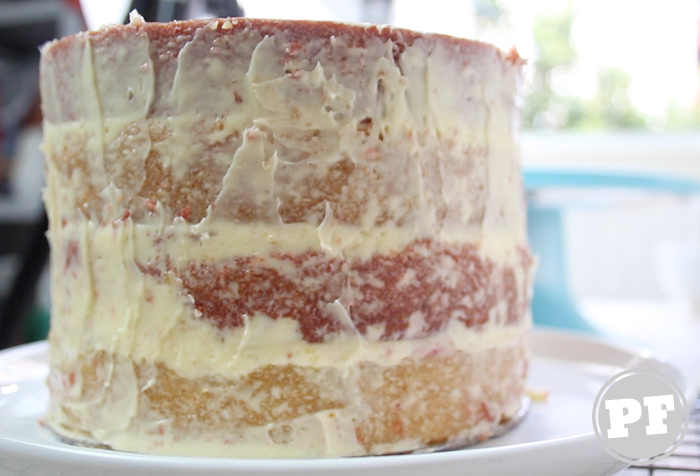

Sign up for our newsletter and stay up to date with exclusive news
that can transform your routine!
Warning: Undefined array key "title" in /home/storelat/public_html/wp-content/plugins/link-whisper-premium/templates/frontend/related-posts.php on line 12
Warning: Undefined array key "title_tag" in /home/storelat/public_html/wp-content/plugins/link-whisper-premium/templates/frontend/related-posts.php on line 13

